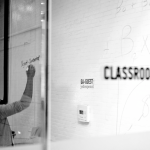
Social Impact

Article
June 19, 2024

Article
May 2, 2024
Celebrating AAPI Tech Trailblazers: Pioneers in Software Engineering, Data Analytics, Data Science, and UX Design

Article
November 1, 2023
How to Afford Leveling Up Your Career: Financing Options at General Assembly
Article
February 23, 2023
Celebrating Women’s History Month With Veterans and Military Spouses: General Assembly & The Adecco Group Sponsor Part-Time Tech Training

Article
February 3, 2023
Investing in Women Entrepreneurs: The Jessica Vollman Foundation Sponsorship 2023
Article
February 2, 2023
Black Women Tech Inventors: Breaking Barriers and Making History
Previous page
- 1
- 2
